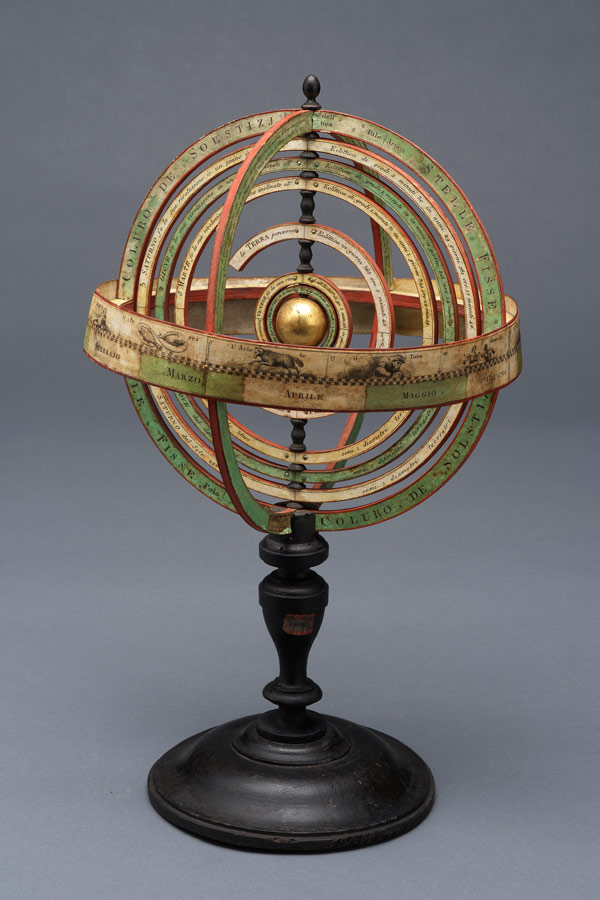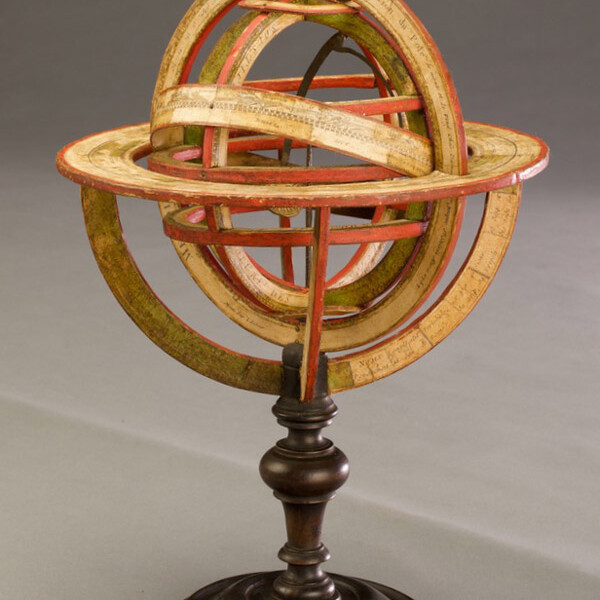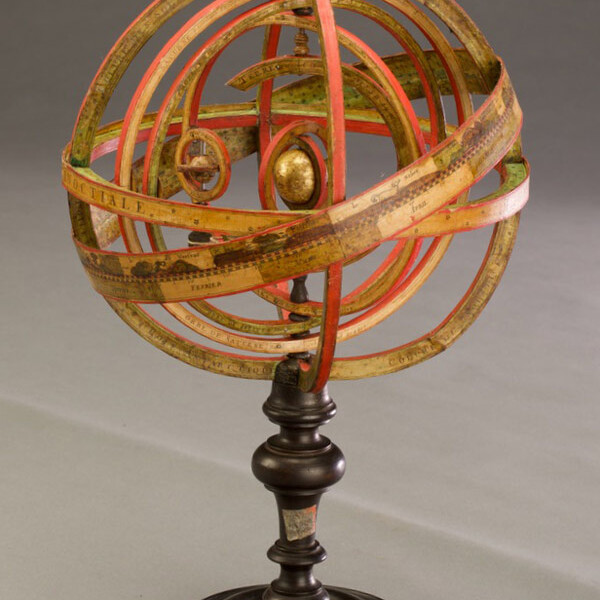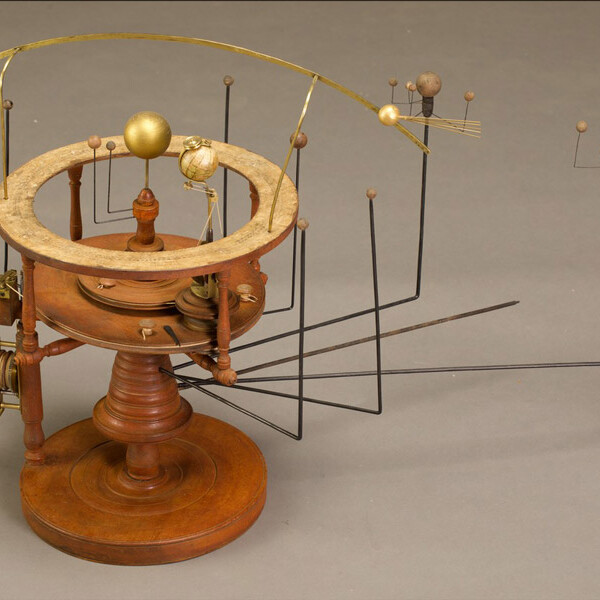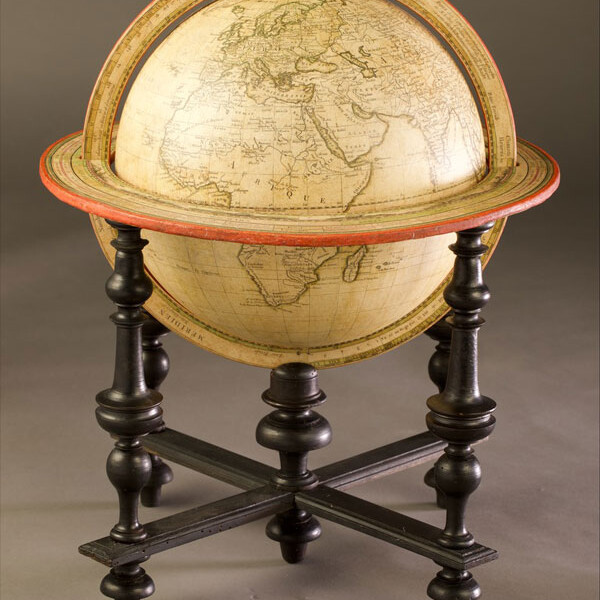This armillary sphere consists of six concentric papier-mâché rings, which can move around a central axis and represent the planets of the Solar System: Mercury, Venus, Earth – whose ring is interrupted, Mars, Jupiter and Saturn; the golden globe in the centre represents the Sun. On each ring is indicated the planet’s name, together with the period of its revolution around the Sun, its orbital inclination and average distance from the Sun. The Earth (now missing) was mounted on a side axis which was connected to the central axis by a small pulley and a cord. The mechanism made it possible to show the Earth’s movements of rotation and revolution simultaneously.
The rings representing the Solar System are encircled by the horizontal ring of the ecliptic, attached to a band on which the months and zodiac constellations are painted, and by two perpendicular vertical circles that pass through the poles. These are the great circles that mark the equinoxes and solstices: the former intersects the ecliptic in correspondence to the spring equinox (March 21) and autumn equinox (September 21); the latter crosses the ecliptic in correspondence to the dates of the summer and winter solstices.
Built by Ferd. Artaria, Milan.
Restored in 2017 by Paolo Brenni and Anna Giatti in the Fondazione Scienza e Tecnica laboratory in Florence.
Device on display.
Heliocentric armillary sphere
This armillary sphere consists of six concentric papier-mâché rings, which can move around a central axis and represent the planets […]
Inventory n.5MSMaterialsWood, paperDimensionsd. 280; h. 430Datec.1800-25
